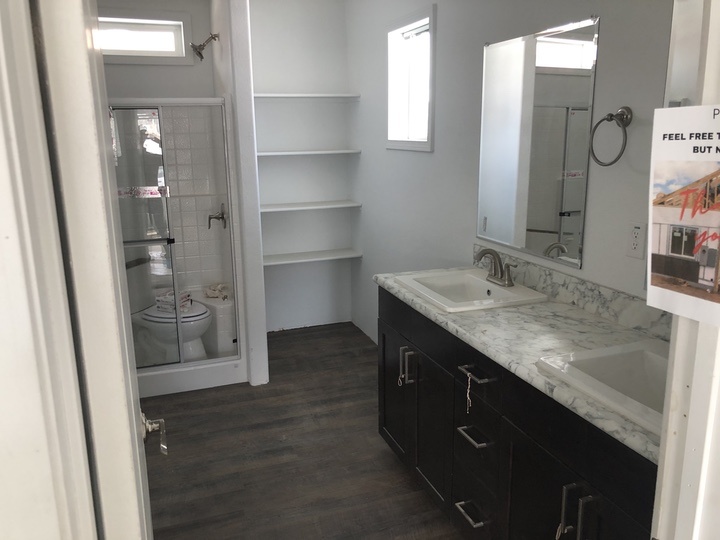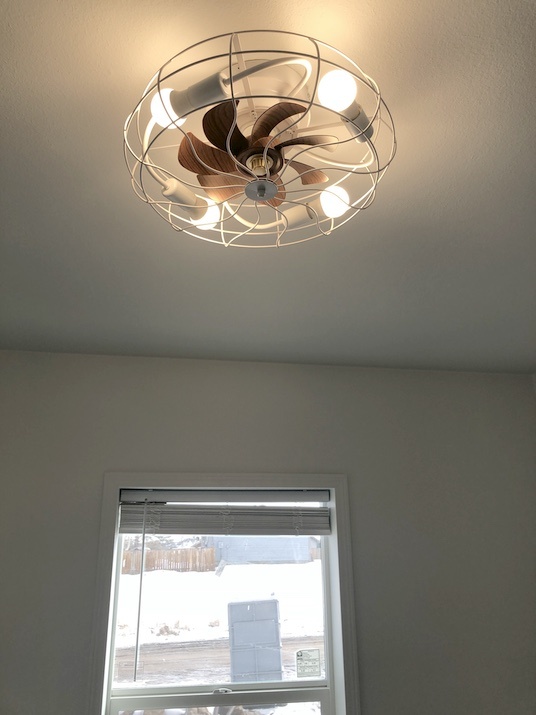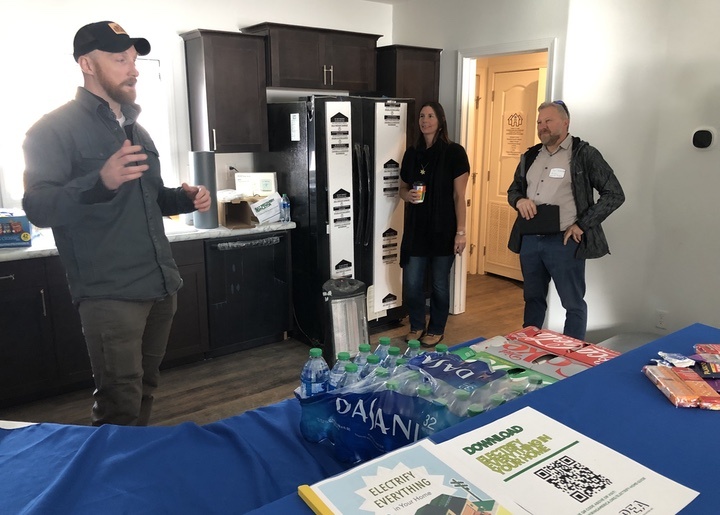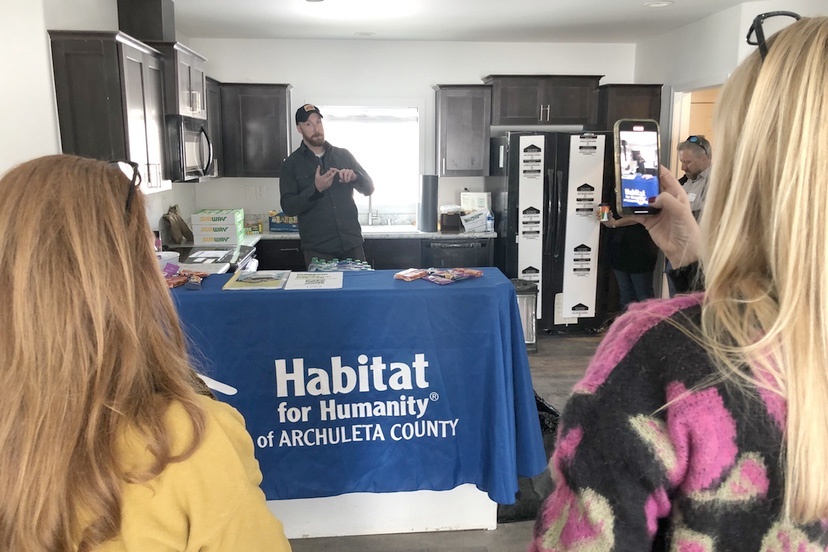We were waiting for the arrival of Jon Kenney, the ‘Energy Management Program Architect’ for La Plata Electric Association (LPEA)…
The folks standing around the living room and kitchen of a newly installed modular house on Ranger Park Drive in the Trails subdivision, a few miles west of downtown Pagosa Springs… were discussing the challenges of building affordable homes in a economy of high interest rates and inflated materials costs.
We were all connected, in some way, to the housing organization known as Habitat for Humanity of Archuleta County, or to the Pagosa Springs Community development Corporation, another nonprofit planning to begin addressing, in the coming months, the housing crisis in our community.
The house itself was a typical three-bedroom single-family home similar to other homes in the neighborhood, but it had been built in Albuquerque, NM, by modular home builder Clayton Homes, trucked to Pagosa, and dropped onto a foundation on a small, 1/10th-acre lot on Ranger Park Drive. Because the Trails subdivision is within the 21-square-mile planned unit development governed by the Pagosa Lakes Property Owners Association, Habitat is in the process of adding a stick-built garage as required by PLPOA.
Habitat Archuleta has been building one home per year for the past three decades, but recently decided to increase their production to three homes per year, due to the serious need for housing in Pagosa Springs. In order to meet that goal, in a community where construction costs are high and a labor force is hard to come by — partly due to a lack of housing — Habitat switched gears and chose to purchase modular homes rather than attempt to produce stick-built homes.
The home on Ranger Park Drive, however, was a special project… because LPEA has begun exploring ways to serve a challenging future. An all-electric future. And was looking for a ‘test site’.
LPEA is one of the rural electric co-op associations that sprung up during and after the New Deal, as the U.S. struggled to dig itself out of the Great Depression by spending billions of dollars on public works projects. Some of those projects involved the electrification of rural counties like La Plata and Archuleta, where the distances between customers — generally, agricultural customers without much in the way of income — had made it unprofitable for large electric companies to install power lines.
The electrification model that seemed to work, during the New Deal, involved ‘electric co-ops’ that were owned by the customers themselves. LPEA is still a co-op, and is still owned by its customers, and its Board of Directors is elected by the customer-members.
While we awaited Mr. Kenney’s arrival, I snapped a few photos.
The bathroom off the master bedroom.
A curious looking fan-and-lighting fixture in one of the smaller bedrooms.
Four large, silver ‘Enphase’ batteries installed in a closet near the back door, tied in to the solar panels on the roof.



When Mr. Kenney arrived, we began to hear about why this experimental house is important to LPEA’s plans for the future.
As the world moves slowly — painfully slowly — away from the use of fossil fuels, electric utilities are expected to pick up a lot of the slack. Charging our electric cars, heating our houses, cooking our food, powering our factories, and in particular, continuing to generate the electricity to which we’re accustomed without burning coal, oil, or natural gas.
As our homes, and places of business, and agricultural operations convert to ‘all electric’, this is going to put additional stress on electric utilities to meet the increased demands. In some places, this conversion to ‘all-electric’ is already causing problems. Brown-outs, and black-outs. Higher prices.
Several approaches will be involved in allowing this conversion to happen, including the development of higher efficiency heating and cooling equipment, higher efficiency cook stoves, localized energy generation using solar panels and windmills, and new ways of storing electricity, for use during times of peak demand. In the case of residential areas, the peak demand typically happens in the morning before heading off to work, and in the evening when returning from work.
LPEA wants to address three key points, going forward. Benefiting the environment, holding prices stable, and making the grid as resilient as possible.

Mr. Kenney:
“As long as we can move forward without negatively affecting one of those three key points, that’s what we consider beneficial electrification, and that’s what we want to support.
“So we’ve done that in this home. We’ve gone all electric here. We’ve got a heat pump [to heat the house]; a heat-pump water heater; induction cooktop; and some other goodies as well.
“So people say, if you’re going to electrify everything, how is the grid going to handle this? And we, as a utility, we say go ahead and electrify everything; we’ve got that covered. For us, it’s called ‘distributed energy resources’, because it come to the point where, when we have devices out there, we can see what’s happening with them; we can actually talk to them. And now we can balance out the supply and demand on our grid, so things like rooftop solar, the batteries that are supplying power to us; and the things that are taking power from us — the heat pumps, water heaters — it’s all WiFi connected, and we can balance it out.
“Yes, we’re going to have to do some upgrades to the grid, as growth comes into the area and people start electrifying some of these things. But we can also use power in smarter ways so we’re not having all these big spikes all the time…”
Sitting on the kitchen counter was a invitation to “Electrify Everything in Your Home”… with a QR code.
The QR Code led to this website: https://www.rewiringamerica.org/electrify-home-guide

